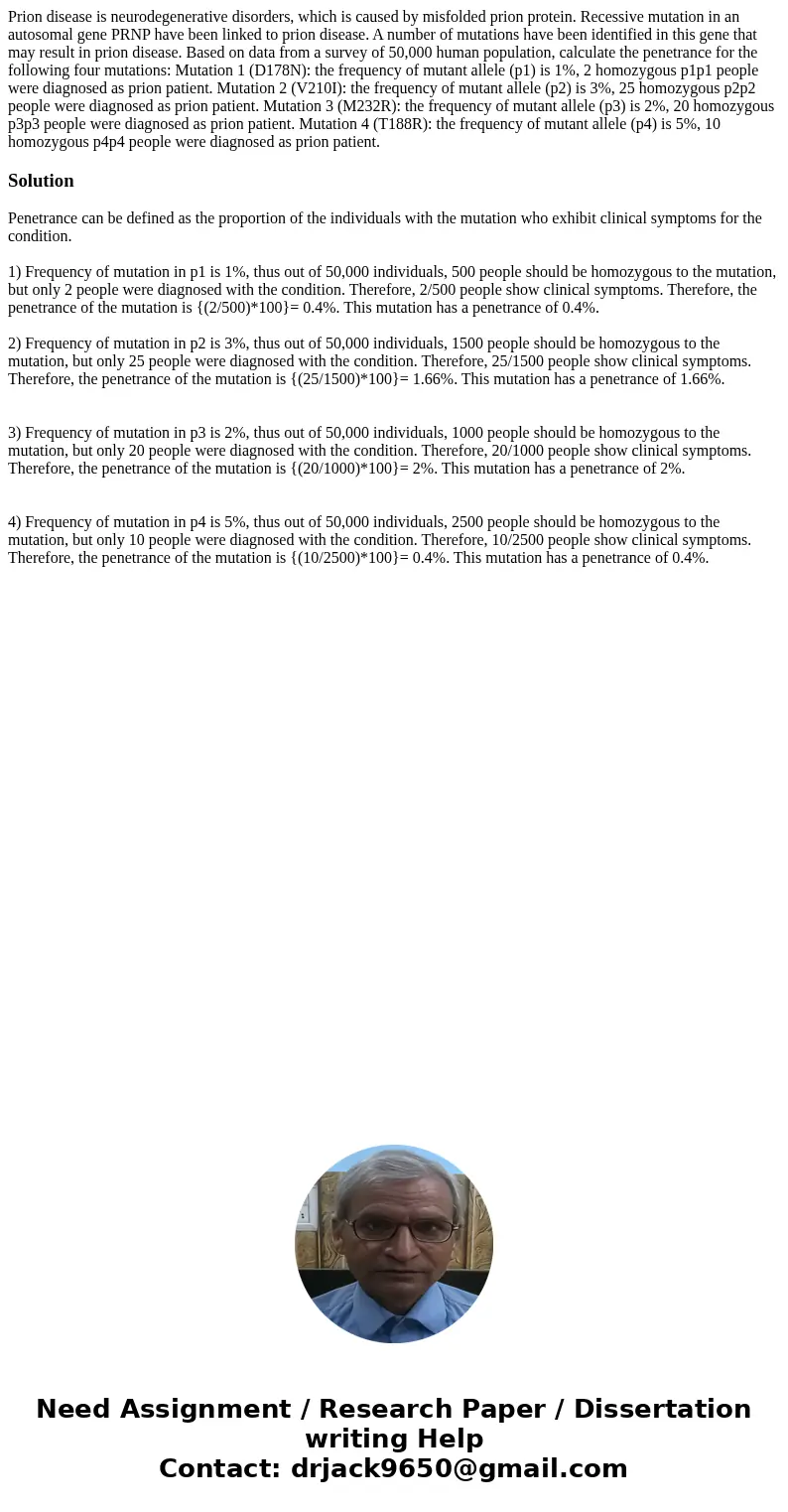Prion disease is neurodegenerative disorders which is caused
Solution
Penetrance can be defined as the proportion of the individuals with the mutation who exhibit clinical symptoms for the condition.
1) Frequency of mutation in p1 is 1%, thus out of 50,000 individuals, 500 people should be homozygous to the mutation, but only 2 people were diagnosed with the condition. Therefore, 2/500 people show clinical symptoms. Therefore, the penetrance of the mutation is {(2/500)*100}= 0.4%. This mutation has a penetrance of 0.4%.
2) Frequency of mutation in p2 is 3%, thus out of 50,000 individuals, 1500 people should be homozygous to the mutation, but only 25 people were diagnosed with the condition. Therefore, 25/1500 people show clinical symptoms. Therefore, the penetrance of the mutation is {(25/1500)*100}= 1.66%. This mutation has a penetrance of 1.66%.
3) Frequency of mutation in p3 is 2%, thus out of 50,000 individuals, 1000 people should be homozygous to the mutation, but only 20 people were diagnosed with the condition. Therefore, 20/1000 people show clinical symptoms. Therefore, the penetrance of the mutation is {(20/1000)*100}= 2%. This mutation has a penetrance of 2%.
4) Frequency of mutation in p4 is 5%, thus out of 50,000 individuals, 2500 people should be homozygous to the mutation, but only 10 people were diagnosed with the condition. Therefore, 10/2500 people show clinical symptoms. Therefore, the penetrance of the mutation is {(10/2500)*100}= 0.4%. This mutation has a penetrance of 0.4%.

 Homework Sourse
Homework Sourse